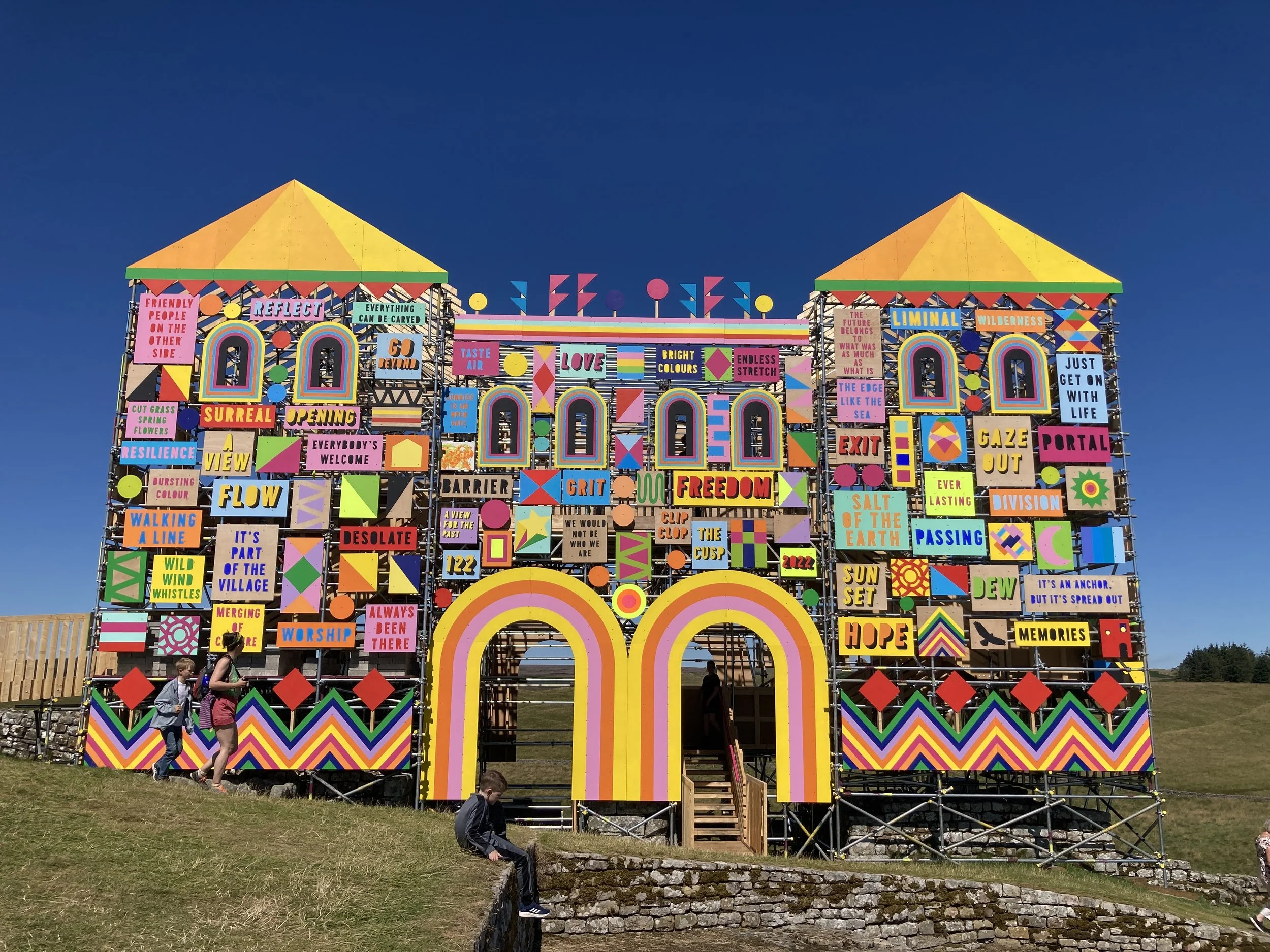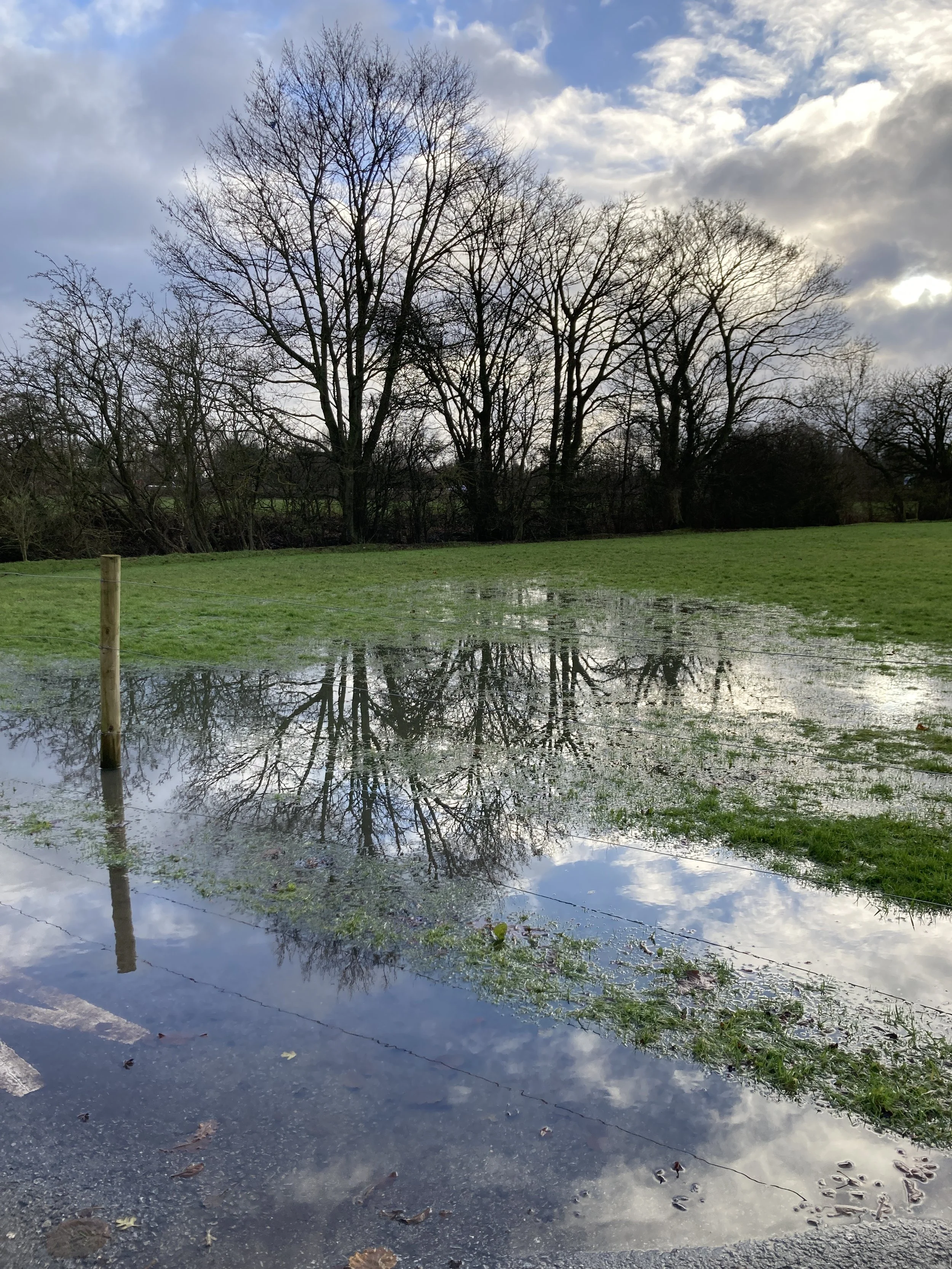Art with the community
This week we visited Housesteads Roman Fort on Hadrians’ Wall in Northumberland. This is always an interesting place to go, trying to imagine what it might have been like 1600 years ago when the Roman soldiers were patrolling the wall. An added bonus this summer is the amazing installation created by artist Morag Myerscough and the local community.
The Future Belongs To What Was As Much As What Is Installation on the site of the North Gatehouse at Housesteads Roman fort. Morag Myerscough
The installation is part of celebrations by English Heritage of the 1900th anniversary of the building of Hadrian’s wall. Built to the size of the original gatehouse and placed on the same site, this temporary scaffolding structure is coated in wooden panels decorated with patterns inspired by the Roman artefacts in the nearby Chesters Museum and words and phrases drawn from community workshops with Morag and poet, Ellen Moran.
Local community groups were invited to contribute their thoughts about what the wall means to them and what it might have meant to those who lived there when it was built. They also painted the boards.
It was lovely to see lots of people visiting, children reading out the words on the panel and taking the chance to climb inside and enjoy the views. I think my favourite phrase was ‘we would not be who we are.’, something that all those who reject immigration and refugees should consider.
Reflections
Reflecting on the process and outcomes of this project, made me think about how artists work with the community. I wrote about Community Stitching some time ago on my other blog, where I described knitting and stitching projects in which a group of people work together to make a piece, which in most cases results in a quilt or blanket which is given to someone who needs a hug and some warmth.
There are other projects where the community contribute to the final piece of art, often with ideas, even if they do not create the final piece. I recently wrote about an example I took part in, Fragment of a Dress, where Hannah Lamb invited strangers to contribute words which were then stitched by other people. The stitchers in this case, students at Bradford School of Art, came to one place to do the stitching, and that ‘community’ (of which I was part), gained something from the experience of stitching words together in one space. That project is at Brontë Parsonage Museum until the end of the year.
And then there are other projects where the process of coming together and stitching is as important as any product. A great example of an artist working in this way is Claire Wellesley-Smith, a textile artists who spends much of her time working in socially-engaged textile and heritage projects with underserved communities in West Yorkshire. She has found that a textile activity offers a space of cooperation, for collaboration and potentially for increased wellbeing. (Wellesley-Smith, 2021, p. 42).
It occurs to me that it takes great courage as an artist to make a proposal, and apply for funding, for a project of this kind. What will happen, will the community be interested? Will they come forward and write the words or stitch those pieces?
References
Wellesley-Smith, C. (2021) Resilient Stitch. London: Batsford.














